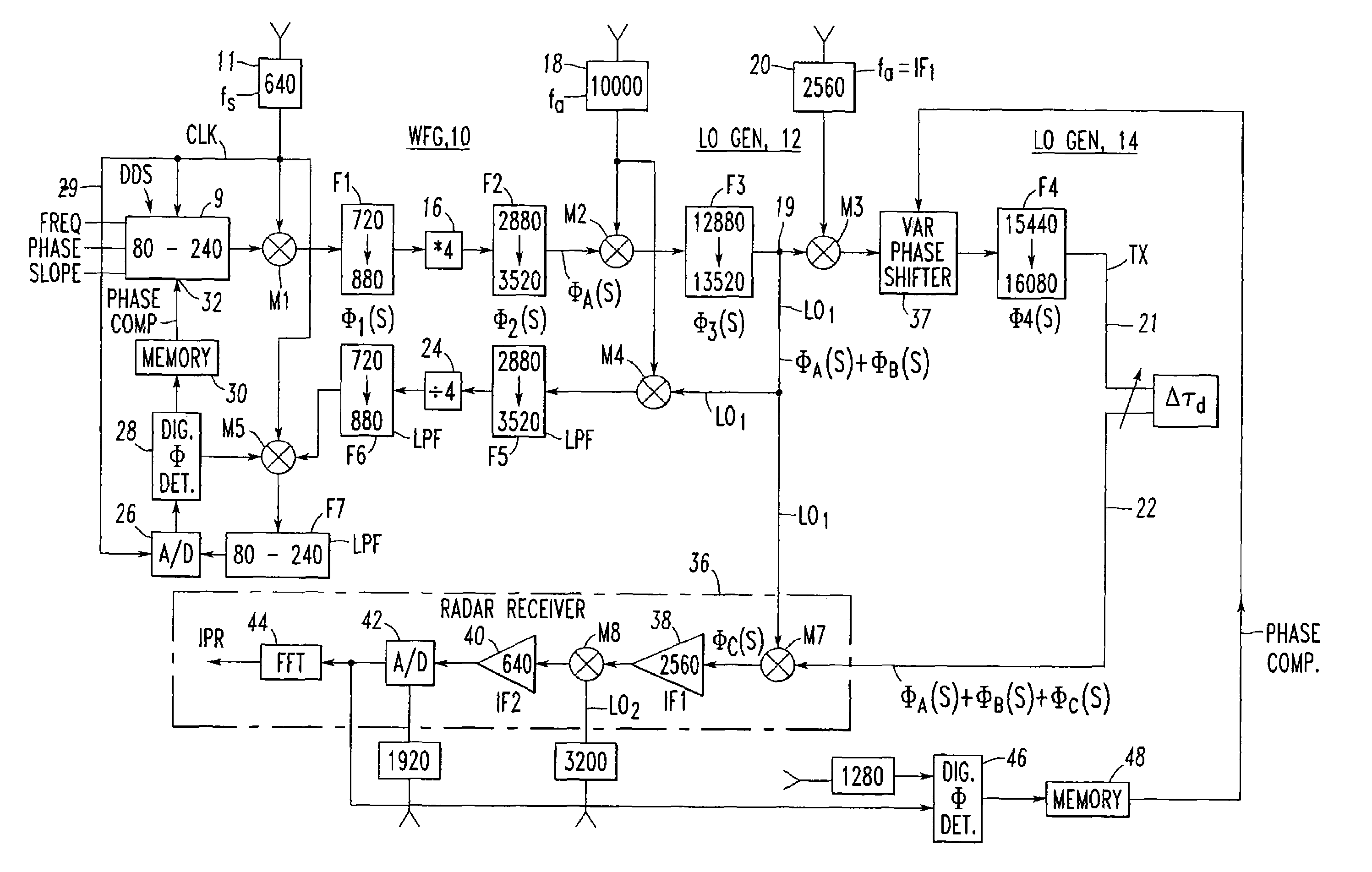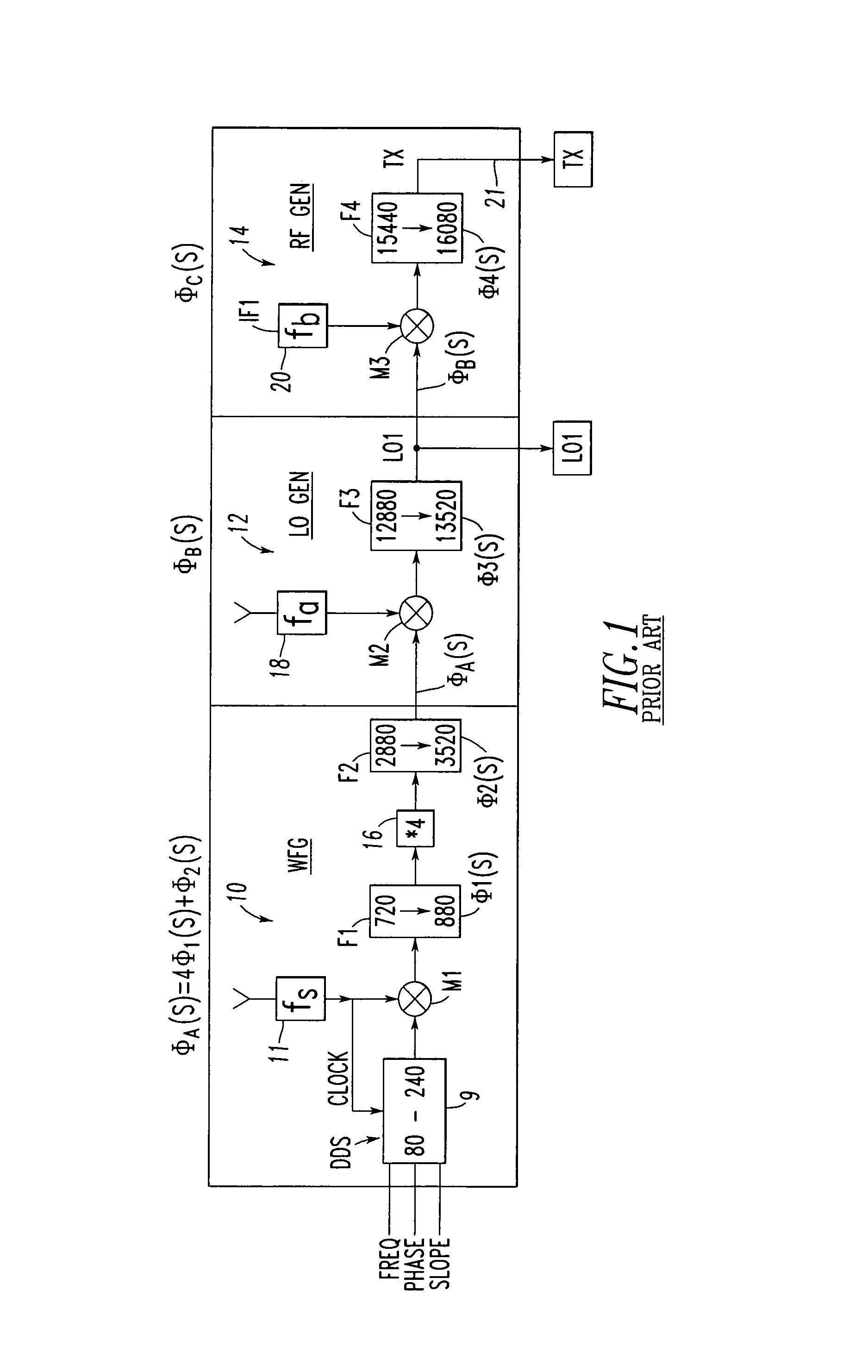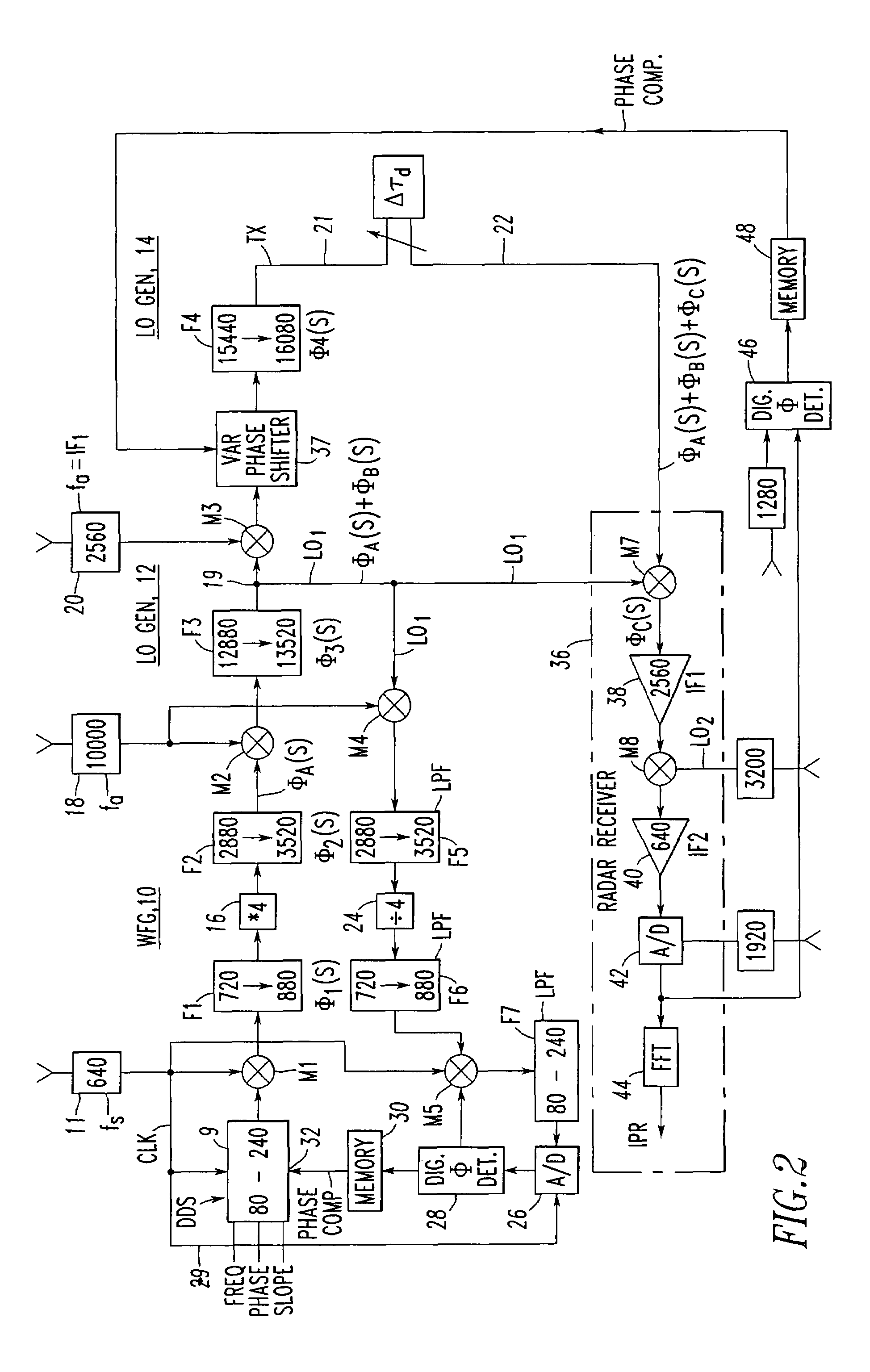Radar exciter including phase compensation of the waveform generator
- Summary
- Abstract
- Description
- Claims
- Application Information
AI Technical Summary
Benefits of technology
Problems solved by technology
Method used
Image
Examples
Embodiment Construction
[0038]Referring now to the drawings wherein like reference numerals refer to like circuit elements throughout, and having discussed the prior art in FIG. 1 and FIG. 2 as it relates to including the elements of FIG. 1, FIG. 2 also discloses the broad concept of the subject invention where separate phase compensations are provided for both the receiver LO1 signal and the transmitter signal TX.
[0039]Referring again to FIG. 2, phase compensation in the waveform generator (WFG) 10 is achieved by down converting the LO1 signal. This is achieved by feeding LO1 at circuit node 19 including the phase perturbations ØA(S)+ØB(S) to a signal mixer M4 which also receives frequency fa. The difference signal is applied to a (228-3520 MHz) lowpass filter F5 which is then divided in frequency by a factor of 4 in a frequency divider 24. The output of the frequency divider 24 is next fed to a (720-880 MHz) lowpass filter F6, where it is then fed to another mixer M5 along with a 640 MHz fs signal via si...
PUM
 Login to View More
Login to View More Abstract
Description
Claims
Application Information
 Login to View More
Login to View More - R&D
- Intellectual Property
- Life Sciences
- Materials
- Tech Scout
- Unparalleled Data Quality
- Higher Quality Content
- 60% Fewer Hallucinations
Browse by: Latest US Patents, China's latest patents, Technical Efficacy Thesaurus, Application Domain, Technology Topic, Popular Technical Reports.
© 2025 PatSnap. All rights reserved.Legal|Privacy policy|Modern Slavery Act Transparency Statement|Sitemap|About US| Contact US: help@patsnap.com



